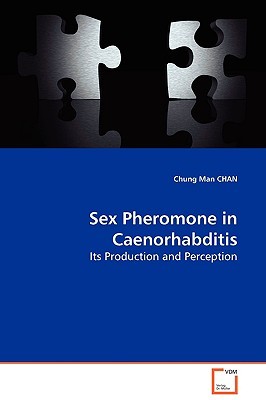
- We will send in 10–14 business days.
- Author: Chung Man Chan
- Publisher: VDM Verlag
- ISBN-10: 3639132041
- ISBN-13: 9783639132045
- Format: 15.2 x 22.9 x 1.1 cm, softcover
- Language: English
- SAVE -10% with code: EXTRA
Reviews
Description
Finding a mating partner in a dioecious species is an obligatory process for species survival. We have used C. remanei and C. elegans as models to show that only females of the dioecious species can produce a volatile and stable sex pheromone to effectively attract males. Since males from both dioecious and androdioecious species respond to this same pheromone, I utilize these species to focus my investigation on three specific issues: To study sex pheromone production in C. remanei, to characterize C. remanei female sex pheromone, and to identify the cellular and the molecular components for sex pheromone perception. The pheromone is produced by the somatic gonad. The production peaks at the young adult stage, and mating with males would eliminate the attractiveness of a female. Mating itself and the presence of sperms in the female body would not eliminate the pheromone attractiveness. Two different sensory neurons and an interneuron are shown to be required for this perception. A signaling pathway dependant of G-protein coupled kinase activity and G-protein subunit are crucial for this chemosensory response.
EXTRA 10 % discount with code: EXTRA
The promotion ends in 17d.00:15:14
The discount code is valid when purchasing from 10 €. Discounts do not stack.
- Author: Chung Man Chan
- Publisher: VDM Verlag
- ISBN-10: 3639132041
- ISBN-13: 9783639132045
- Format: 15.2 x 22.9 x 1.1 cm, softcover
- Language: English English
Finding a mating partner in a dioecious species is an obligatory process for species survival. We have used C. remanei and C. elegans as models to show that only females of the dioecious species can produce a volatile and stable sex pheromone to effectively attract males. Since males from both dioecious and androdioecious species respond to this same pheromone, I utilize these species to focus my investigation on three specific issues: To study sex pheromone production in C. remanei, to characterize C. remanei female sex pheromone, and to identify the cellular and the molecular components for sex pheromone perception. The pheromone is produced by the somatic gonad. The production peaks at the young adult stage, and mating with males would eliminate the attractiveness of a female. Mating itself and the presence of sperms in the female body would not eliminate the pheromone attractiveness. Two different sensory neurons and an interneuron are shown to be required for this perception. A signaling pathway dependant of G-protein coupled kinase activity and G-protein subunit are crucial for this chemosensory response.


Reviews